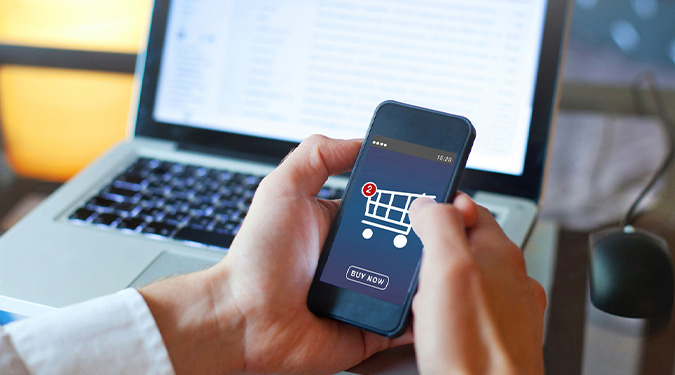Table of Contents
An attractive, efficient, customer-centric eCommerce approach has long been an essential element of successful B2C sales.
For B2B, it is more complex. While many B2B businesses use eCommerce in some form, there are challenges to replicating the B2C eCommerce experience. B2C sales generally rely on individual customers, interacting with the sales platform directly or via a relatively simple range of interfaces.
B2B suppliers have to cater to a wider range of personas in the customer organization, from operational staff to procurement and finance, while managing a shifting and complex set of links between different eProcurement and eCommerce platforms.
Deloitte Digital recently published new research identifying four key B2B commerce trends, and highlighting how suppliers must tackle these challenges to stay competitive:
- Moving at the pace of customer expectations – ‘Born digital’ B2B customers, from Millennials on, have expectations of the buying process that are set by their B2C experience. A B2B buying experience that is not seamless and efficient can lose customers. Deloitte Digital’s research found that 13% of B2B sales can be lost through a negative customer experience.
- Reducing sales friction and creating new growth – Maximizing visibility and automating connections, from catalog search through to payment, streamlines sales, reduces errors and rework, and generates growth. Yet 45% of B2B businesses report that these processes are still extremely or very manual in their organization.
- Driving the value case for the front office on top of back-office ERPs – The value case for new ERP investment is often driven by the need to ‘keep the lights on’ for core back-office processes, rather than by adding new business value. ERP Investment that enables efficient, seamless front-office B2B sales delivers tangible business value. In fact, putting 24% of ERP investment into the front office can deliver 57% of the total value.
- Unleashing new digital channels and capabilities for revenue growth – B2B revenue growth will increasingly be driven by the capability to leverage sales through B2B portals and marketplaces, both in-house and third party, and to maximize value from innovations like Configure, Price and Quote (CPQ) and sales assisted eCommerce.
The most important growth area across all these trends is procurement commerce, also referred to as B2B Connected Commerce. However, it is also the least understood.
What is B2B Connected Commerce?
Procurement commerce, or B2B Connected Commerce, connects supplier eCommerce systems with buyer eProcurement or ERP systems.
B2B Connected Commerce is critical to addressing the four trends identified by the Deloitte Digital research, to meet buyers where they are in terms of how they want to order, and to enable essential flexibility and growth.
PunchOut catalogs create a seamless customer experience for the buyer, by enabling a shopping cart to be built on the supplier’s eCommerce platform, and then transferred back to the customer eProcurement system or ERP to create the purchase order.
Purchase Order and Invoice Automation reduces repetitive and manual data entry as well as risk of errors, while giving full visibility and control through the entire Procure-to-Pay (P2P) process.
Integration Platform as a Service (iPaaS) architecture delivers the scalability and flexibility required to enable growth and adapt to change. A single, cloud-based integration layer enables connections to new and existing customers to be added efficiently. This means that platform changes on either side can be implemented transparently with no impact on the other platform. Alternatively, in-house managed integrations create additional cost, time overhead and growth constraints.
Why is Connected Commerce so vital for B2B success?
According to a recent TradeCentric report, 6 in 10 companies report that at least 21% of their customers are asking for eProcurement integration capabilities, while only around 35% are doing something about it.
The times are changing, and buyers are putting suppliers on notice for how outdated processes impact their business. Around 50% of companies in Deloitte Digital’s research still rely on manual processes. Despite having a static customer base, these businesses may find themselves increasingly pressured to adopt B2B Connected Commerce solutions as the demand for efficiency and transparency continues to rise. Those suppliers who respond effectively will be the ones that come out on top.
For any B2B enterprise looking for flexibility, agility and growth, the potential opportunity costs of underinvestment are real, and will only increase with growing customer expectations around the B2B eCommerce experience, and rising competitive pressures.
How TradeCentric helps B2B suppliers stay ahead
TradeCentric’s best-in-class platform delivers the flexible, scalable B2B Connected Commerce platform suppliers need to move at the pace of customer expectations, reduce sales friction, drive growth and revenue, maximize value from ERP investments and unleash the value of new channels and capabilities.
It is backed by our specialized Professional Services team, equipped with deep industry knowledge.
Integration is TradeCentric’s core competency. We are 100% focused on developing, optimizing and supporting the integrations that deliver frictionless B2B eCommerce, maintaining compliance and currency across our customers eCommerce and eProcurement platforms.
What’s next?
To find out more about how TradeCentric can help with your B2B eCommerce integration strategy, contact us.




